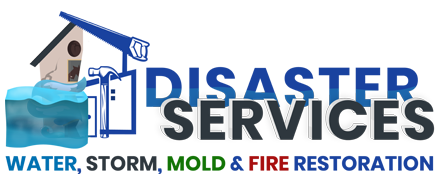It is important to take steps to identify and then remove it if you think there might be mold growing in your home. When it comes to removing mold, otherwise known as mold remediation, it should never be taken on as a DIY project. Remediation services is recommended if mold levels are abnormally high as determined by indoor air quality testing or an inspection. This should be done by a professional remediation company with certified, trained professionals who have experience removing and cleaning-up mold from an indoor environment such as Disaster Services. Today, we would like to share the basic steps of mold remediation.
What Do Professionals Use to Remediate Mold?
1) Application of Antimicrobial. For corrective action, this is the first step. Experts will apply an antimicrobial agent that will prevent mold growth from occurring until the wet area is dried out if your home or business has had recent water damage, but there is no visible mold growth. If they are present, the antimicrobials can also kill existing mold spores.
2) Identifying the Source of Mold. In places that have been previously exposed to water or are near a moisture source is where the mold is often found. Due to condensation, some areas of concern are bathrooms, sink cabinets, basements, and windowsills. Through the use of state-of-the-art industry specific moisture detection equipment and inspection tools such as thermal imaging is used by technicians to identify elevated moisture concentrations in residential and commercial structures. Usually this will help determine the source of the moisture exposure.
3) Mold Containment. If given the right conditions, mold can spread quickly. The professionals will isolate the contaminated area(s) to eliminate the spread of mold spores to other areas of the property after the source of moisture intrusion has been repaired. To minimize the potential effects of cross contamination to other unaffected areas, containment is critical.
4) Air Filtration. Spores can be disturbed and become airborne during the process of mold removal. The air needs to be cleaned as well in conjunction with containment. Throughout the project, negative air machines with high efficiency particulate (HEPA) air filters run continuously. This ensures that the affected areas have all mold spores, microbial volatile organic compounds (MVOCs), dust, and other airborne debris are completely removed.
5) Mold Removal & Cleanup. The only effective way to ensure proper mold remediation is to remove affected materials completely in most cases. Insulation, wood trim, drywall, carpet and even furniture are all commonly involved.
To professionally clean up mold from your home or business, most experts follow S520 industry standards written by the Institute of Inspection Cleaning and Restoration Certification (IICRC). The use of a licensed environmental hygienist is required if the area contaminated with mold is greater than 10 sq. ft. Giving our customer peace of mind that the mold has been properly mitigated, the hygienist will provide a final clearance test.
6) Replacement. The removal of affected materials is required as it could be possible that areas contaminated by mold, as we mentioned earlier. Professionals can provide restoration services and repair affected areas with new building materials in such situations. The property will be restored to a pre-loss condition once finished.
Flood & Water Damage Restoration in Baytown, Pasadena, Humble, Deer Park, Crosby, Channelview, League City, Pearland, Missouri City, Sugar Land, Cypress, The Woodlands, Spring & Greater Houston, Texas
If you are facing mold problems in Houston, Texas, call in the professionals of Disaster Services and let us provide quality mold remediation services.





